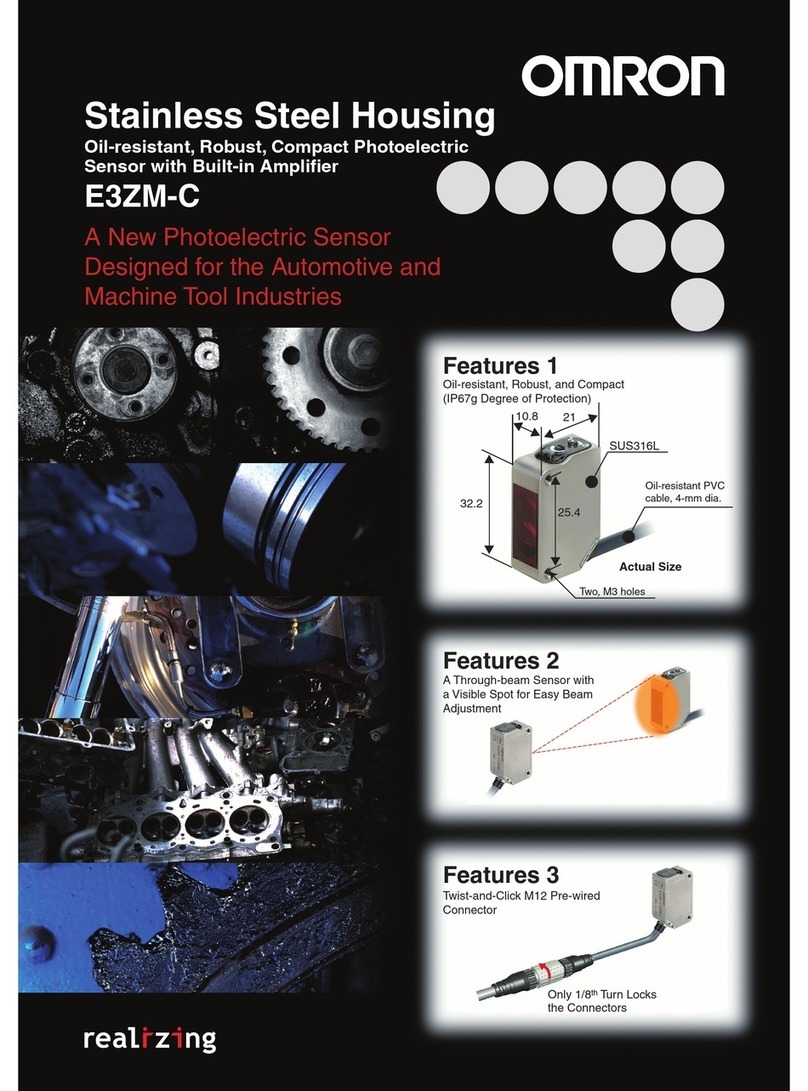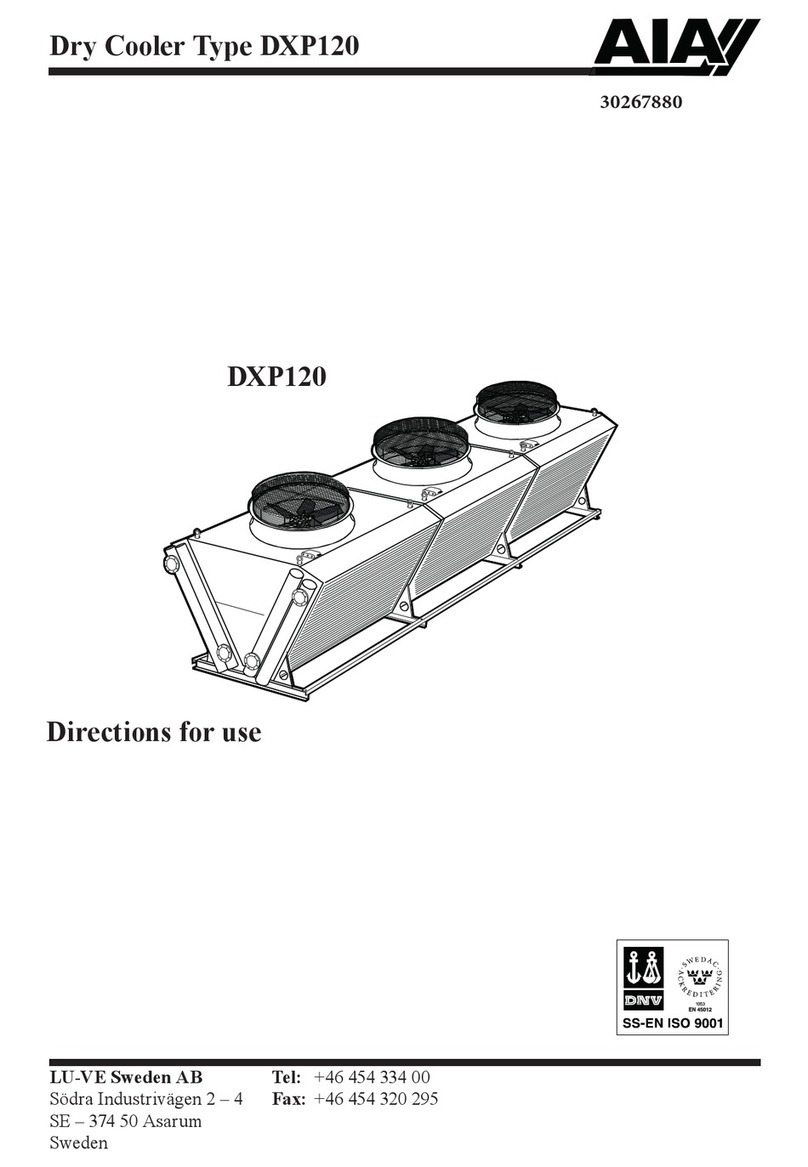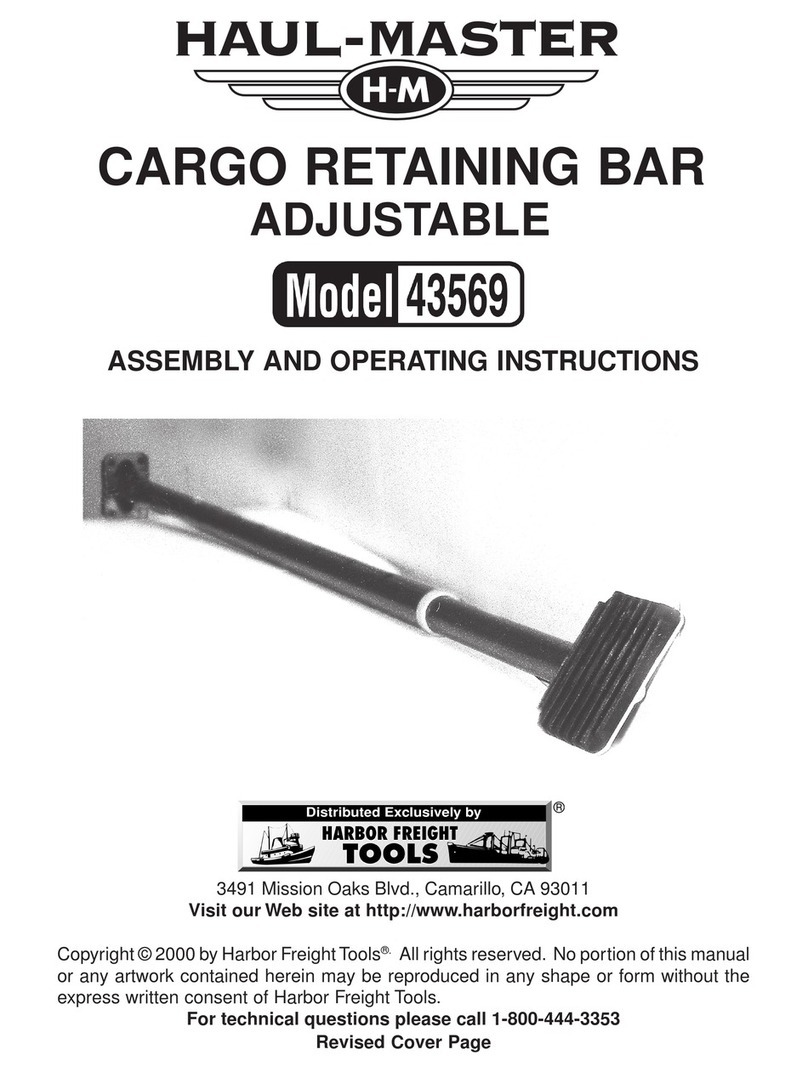cleasby RTH 3000 User manual

PLEASE READ
The Following Signal Word Panels define signal words used in this manual.
You must make yourself familiar with their meaning and application as it
pertains to warnings and cautions provided in this manual. Please see ANSI
Z535.6 for additional information.
DANGER indicates a hazardous
situation which, if not avoided, will
result in death or serious injury.
WARNING indicates a hazardous
situation which, if not avoided, could
result in death or serious injury.
CAUTION, used with the safety alert
symbol, indicates a hazardous situation
which, if not avoided, could result in
minor or moderate injury.
NOTICE is used to address practices
not related to personal injury.
CAUTION, without the safety alert
symbol, is used to address practices
not related to personal injury.
Courtesy of Crane.Market

IMPORTANT INFORMATION
The fact that the FBR conveyor is partially produced and assembled from components of
fiberglass and other traditional electrical non-conductive materials MUST NOT BE
ASSUMED AS A SAFE-GUARD against an inadvertent contact with a power line. You must
exercise the utmost care. There are many factors that influence the electrical conductivity of a
structure such as the FBR conveyor. In addition, IT IS AGAINST FEDERAL AND STATE
LAW TO POSITION THE CONVEYOR WITHIN TWENTY (20) FEET OF A POWER
LINE. ALWAYS USE EXTREME CAUTION WHEN OPERATING THE
CONVEYOR. “SEE 29 CFR 1926.1400”
oRisk of DEATH or SERIOUS INJURY if conveyor or load comes into Contact
with or Proximity to Power Lines. It is against Federal and State Law to position the
conveyor within twenty (20) feet of a power line. Always use extreme caution when
operating the conveyor.
oRisk of DEATH or SERIOUS INJURY if conveyor or load comes into Contact
with or Proximity to Power Lines. Never replace the hydraulic lines on the conveyor
with substitution lines made with metal or rubber. Replace only with identical brand
and type as installed as original equipment on the conveyor. Call Cleasby Conveyors
for information (800) 435-2446 or (801) 773-1311 for additional information.
oRisk of DEATH or SERIOUS INJURY if conveyor or load comes into Contact
with or Proximity to Power Lines. Never replace the conveyor belt except with the
identical brand and type as installed as original equipment on the conveyor. Call
Cleasby Conveyors for information (800) 435-2446 or (801) 773-1311 for additional
information.
The Hydraulic lines employed on the conveyor are a special electrical non-conductive material.
Their basic properties resist the flow of electrical current and thus make them poor conductors. The
fact that the composition of the hydraulic line material makes it a poor conductor of electricity, MUST
NOT be considered as a safeguard against contact with or proximity to Power Lines. Numerous
possibilities of various contaminants in the hydraulic fluid carried in the lines make possible the
conduction of electrical current along these fluid corridors. THE HYDRAULIC LINES MUST NEVER
BE REPLACED EXCEPT WITH AN IDENTICAL BRAND AND TYPE AS INSTALLED ON
THE CONVEYOR.
The belt used on the FBR Conveyor is a special electrical non-conductive belt. Its' basic properties
resist the flow of electrical current and thus make is a poor conductor. The fact that the composition of
the belt material makes it a poor conductor of electricity, MUST NOT be considered as a safeguard
against contact with or proximity to Power Lines. Dirt, Dust, Debris or other contaminants or the
presence of Water or other Fluids on the surface of the belt may alter or change its conductive
characteristics with the result that it may become a CONDUCTOR of ELECTRICITY. The PVC
material employed in the fabrication of the belt is a unique and special composition. THE BELT MUST
NEVER BE REPLACED EXCEPT WITH AN IDENTICAL BRAND AND TYPE AS INSTALLED
ON THE CONVEYOR.
Courtesy of Crane.Market

TABLE OF CONTENTS
WARNING AND CAUTIONS
Warnings and Cautions 1-1
Conditions and Locations 1-2
Uses 1-3
Operation 1-4
Labels Placed by the Manufacturer
WARRANTY 1-6
SECTION ONE
GENERAL INSTRUCTIONS
General 1-9
Transporting and Positioning 1-10
SECTION TWO
MOUNTING INSTRUCTIONS GENERAL
Parts Supplied by ACT 2-1
Parts Supplied by the Customer or Installer 2-1
INSTALLATION PROCEDURE
Mounting the Turntable 2-2
Mounting the Conveyor 2-3
Connecting Hydraulic Hoses 2-4
Bleeding the System 2-5
Warning Labels and Safety Devices 2-5
Final Inspection 2-5
SECTION THREE
OPERATING FEATURES
Operating Features 3-1
OPERATING PROCEDURES
Positioning Conveyor for operation 3-2
Transporting Material to Roof 3-3
Observing Live Load Limits 3-3
Returning Conveyor to Traveling Position 3-3
SECTION FOUR
MAINTENANCE AND SERVICE INSTRUCTIONS
GENERAL
General Instructions 4-1
Cleasby Conveyors (Rev. 08/14/12)
Courtesy of Crane.Market

ROUTINE MAINTENANCE
Daily Maintenance 4-1
Weekly Maintenance 4-1
Monthly Maintenance 4-2
Preparation for Storage 4-4
UNIT REPLACEMENT
Unit Replacement Instructions 4-5
NOTES
Lowering the Conveyor without Power 4-6
MAINTENANCE AND SERVICE RECORDS
Safety and Warning Labels 4-6
Labels Placed by You or the Installer 4-6
Suggested Forms
SECTION FIVE
PARTS IDENTIFICATION
Conveyor Parts 5-1
Turntable Parts 5-2
SECTION SIX
INTRODUCTION
INSTALLATION 6-1
Stabilizer Frame Mounting 6-1
Installing Stabilizer Legs and Cylinders 6-2
Mounting the Control Valve 6-3
Connecting Hydraulic Lines 6-4
Testing the System 6-5
OPERATION
Lowering the Stabilizers 6-5
Retracting the Stabilizers 6-5
MAINTENANCE
Daily Maintenance 6-6
Weekly Maintenance 6-6
Annual Maintenance and Preparation for Storage 6-6
PARTS LIST
Cylinder Rigging Parts 6-7
Stabilizer Assembly Parts 6-8
SECTION SEVEN
WARNING LABELS 7-1
Courtesy of Crane.Market

IMPORTANT INFORMATION
PLEASE READ
This section contains special instructions and information for the FBR Series insulated
fiberglass roofing conveyor that you must know.
It is essential that you read, understand, and comply with all warnings and instructions as
set forth in this manual. Warning Labels are furnished together with a video tape and booklet
entitled "Conveyors and Electricity Don't Mix". The video tape and booklet are free
simply by calling 1-(800) 453-2446. Additional warning labels and manuals are also
available free of charge by calling this toll free number.
The fact that the FBR conveyor is partially produced and assembled from components of
fiberglass and other traditional electrical non-conductive materials MUST NOT BE
ASSUMED AS A SAFE-GUARD against an inadvertent contact with a power line. You
must exercise the utmost care. There are many factors that influence the electrical
conductivity of a structure such as the FBR conveyor. In addition, IT IS AGAINST
FEDERAL AND STATE LAW TO POSITION THE CONVEYOR WITHIN
TWENTY (20) FEET OF A POWER LINE. ALWAYS USE EXTREME
CAUTION WHEN OPERATING THE CONVEYOR.
The fiberglass surfaces of the conveyor should be carefully inspected from time to time to
make certain that they are free from oil, dirt and other grime that can accumulate on the
conveyor. The presence on the fiberglass surface of this type of debris and other foreign
materials and fluids, including water, may adversely effect the electrical conductivity of
the conveyor, should it inadvertently come into contact with or proximity of a power line.
Keeping the conveyor clean helps stop the path of electricity.
Please read and comply with the instructions and warnings that follow; and also the
"IMPORTANT INFORMATION" section contained on the first page following the title
page of this manual. There, directions and warnings are provided concerning among other
things, replacement criterion for the conveyor belt and hydraulic fluid line.
Courtesy of Crane.Market

WARNINGS AND CAUTIONS
Since there are so many factors to
consider, Cleasby Conveyors (CM)
cannot possibly provide you with an
exhaustive list of all conceivable hazards
or problems that may arise while
operating a conveyor. While so engaged,
you accept a demanding set of
responsibilities that cannot be delegated
to another. You must be ever mindful of
your responsibilities and care necessary
to perform your duties safely. (CM)
cannot anticipate and thus warn you
against all possible hazards. Therefore,
you must apply the warnings and
instructions provided both in the owner's
manual, video tape (see below) and
labels attached to the machinery in the
broadest sense. Do not limit them to the
particular situation or set of
circumstances described or depicted.
The intended use of (CM) truck-
mounted conveyors are to move a
variety of roofing materials-not people
or equipment, from the truck bed to an
elevated location such as a rooftop.
When you use the equipment for other
than its intended purpose, hazards
arise.
Because of the nature and function of the
equipment, some moving parts are
always exposed without benefit of shield
or guard. Use extreme care. READ ALL
WARNINGS AND WARNING
LABELS,
USE the truck-mounted conveyor unit
ONLY for its intended purpose, and no
other. Operate the equipment only after
you have been thoroughly trained in its
use, including viewing the safety video,
"Conveyors and Electricity Don't
Mix" (see page 1-6).
Persons
1.) Training prior to operating
equipment. Operate the equipment only
after being thoroughly trained in its
proper use, including reading the booklet
and viewing the video provided
"Conveyors and Electricity Don't
Mix". Since one type of conveyor unit
may operate differently than another,
ONLY operate equipment upon which
you have received specific training.
Training should include and anticipate
both normal and emergency conditions.
Users should be retrained in the safe
operation of the equipment every six (6)
months. If you have not operated the
equipment within the past 60 days,
retrain on the unit prior to using it.
2.) Health/Physical Requirements.
Operate the conveyor and turntable only
if you are free from health problems, or
physical or mental limitations that might
impair judgment or limit in anyway your
ability to operate the equipment safely.
Operator responsibilities typically
include loading or unloading the
conveyor with roofing materials. This
activity requires a high degree of
physical exertion. Accordingly, persons
with health problems or physical
limitations may unduly stress
themselves, aggravate existing health
conditions; and cause additional harm
due the physical demands associated
with this activity. In addition, such an
operator may be placing others at risk.
3.) Caution when lifting. Use caution
when lifting heavy objects. Failure to
observe proper procedures and due care
when lifting can result in bodily injury,
including but not limited to, hernias and
back stress. Wear a support belt.
Cleasby Conveyors Warnings and Cautions
Cleasby Conveyors (Rev. 08/14/12) | Page 1-1
Courtesy of Crane.Market

4.) Be careful. Do not use the conveyor
equipment in a careless or unguarded
manner. Be aware of potential dangers
that can, or do exist under particular
operating circumstances, whether or not
expressly identified by warning or
instruction. Failure to exercise prudence
and due care while operating the
equipment is unsafe and hazardous.
5.) Follow the operating
instruction. Follow the operating
instructions with exactness.
6.) Training before adjusting. Only
service or adjust the equipment if you
have received appropriate training to do
so.
7.) Clothing. Wear proper clothing
when operating the equipment. Do not
ware loose clothing, since it might get
caught in the moving parts of the
machinery. Also, wear appropriate
personal safety equipment while
operating the conveyor or turntable: i.e.
steel-toed safety shoes (tennis shoes, or
other shoes with a gripping tread, when
working on the roof), hard hat and
gloves, as necessary.
Conditions and Locations
1.) Truck Maintenance. Maintain
the truck upon which the conveyor
unit is mounted according to
manufacturer's recommendations.
Repair or replace damaged or worn
parts or equipment promptly.
2.) Conveyor Maintenance.
Properly maintain the conveyor as
described in Section Four, Maintenance
and Service Instructions" of this
manual.
Risk of DEATH or SERIOUS
INJURY if the Conveyor or
Load comes in Contact with
or Proximity to Power Lines.
3.) DO NOT OPERATE THE
CONVEYOR NEAR ELECTRICAL
POWER LINES. It is against the law
to operate the conveyor within twenty
(20) feet of power lines. DO NOT
OPERATE THE CONVEYOR IF
POWER LINES ARE WITHIN THE
SAFETY ZONE (see General
Instructions, Section One). A good rule
of thumb is to come no closer to a
power line than the length of the
conveyor, or in other words, 20-40 feet
should be maintained between the
conveyor and the nearest power line. If
powerline voltage is unknown, keep
fifty (50) feet away. If the conveyor
comes close to, or in contact with
power lines, both the conveyor and the
truck will become charged with
electricity. Almost all power lines carry
enough current to kill you and anyone
who is in contact with or near the
conveyor or the truck.
4.) Truck Positioning. Position the
truck on firm, level ground. This
makes pivoting the conveyor as easy
as possible. Make sure the truck is
stable before releasing the conveyor
boom from its resting position on the
rack mounted to the truck; and
before operating the conveyor. The
truck will not be stable if it is on a pile
of dirt, soft or unstable ground or other
non-uniform support. If the truck is not
stable, it may tip or lean during
conveyor operation resulting in loss of
control
Cleasby Conveyors Warnings and Cautions
Cleasby Conveyors (Rev. 08/14/12) | Page 1-2
Courtesy of Crane.Market

5.) Truck Wheels. Block truck wheels to
prevent rolling. The transmission will
not help because it must be in
"neutral" to power the conveyor
hydraulic system.
6.) Stabilizers. Lower the stabilizers
(which are attached to the truck frame),
firmly to the ground in order to aid in
stabilizing the truck against rollover.
Vehicle Rotation Hazard, Risk of
Falling or other Serious Injury.
Do Not Operate on Un-level
Surface. Use Stabilizers.
7.) Inspect Job Site carefully before
repositioning the conveyor. Be aware of
equipment, workers, or other people on
the ground, by the building or on the
roof who may be affected in any
8.) Keep truck and conveyor clear of
trees, scaffolding, earth overhangs etc. If
you bump them they could fall on
something…or someone.
9.) Operating in Wind. Do not operate
the conveyor in windy conditions. That
means: if there is a brisk breeze, do not
operate. IN NO CASE should you
operate the conveyor when the wind
exceeds 20 mph. In windy conditions,
store the conveyor boom securely over
the truck cab, and park the truck in a
sheltered area.
10.) Altering Equipment. Do not alter
the safety characteristics of the conveyor
or turntable. Do not remove or modify
any guards, safety valves, pressure relief
valves, etc.
11.) Wet Conditions. If your conveyor
is powered by an electric motor, operate
only when dry. Water on the truck bed,
conveyor, or the ground, increases the
risk of electrocution.
Uses
1.) Valves and Handles. Do not use the
hydraulic valves and handles as steps or
rests to bear the weight of any
materials or people. Such abuse may
damage the valves and impair their
function, creating a hazardous
condition.
2.) Conveyor Not a Crane. Do not use
the conveyor as a crane to pick-up and
lift, or rotate any objects or people.
3.) Running Conveyor. Do not ride,
stand or sit on a running conveyor, or
allow anyone else to
4.) Valves and Handles. Do not
use the hydraulic valves and handles
as steps or rests to bear the weight of
any materials or people. Such abuse
may damage the valves and impair
their function, creating a hazardous
condition.
5.) Conveyor Not a Crane. Do not
use the conveyor as a crane to pick-
up and lift, or rotate objects or
people.
Cleasby Conveyors Warnings and Cautions
Cleasby Conveyors (Rev. 08/14/12)| Page 1-3
Courtesy of Crane.Market

especially watchful while raising,
lowering or rotating the conveyor.
6.) Weight Limits. Note and observe
weight limits and load capacities of each
conveyor. Each conveyor has a weight
limit/load capacity of eighty (80) pounds
per flight (cleat). That means, if eight
(8) flights are showing on the top side of
the conveyor at any one time, the load
capacity is 720 lbs., to be distributed at
no more than ninety (90) pounds in front
of any given flight. Operating the
conveyor with loads in excess of safe
limits is hazardous.
5.) Unauthorized Personnel. Do not let
unauthorized and untrained individuals,
especially small children, on, near or
around the equipment.
6.) Training before Operating. Do not
attempt to use the conveyor equipment
unless you have been fully trained in its
proper use and operation.
7.) Training on Turntable Controls. Do
not attempt to raise, lower or rotate the
boom, or run the belt on the turntable-
mounted conveyor unless you are
familiar with the hydraulic valves,
control handles and functions.
1.) Do not operate the equipment
until you have set-up an operating
SAFETY ZONE around the truck and
equipment,
7). Always review operating
instructions, decals and written
brochures before attempting to
operate the equipment.
8.) Unobstructed View. Operate the
conveyor only when your view of the
conveyor and the surroundings is
complete and unobstructed. It is
recommended that a be used to
watch the equipment as you move it.
2.) Missing Safety Device. Do not
operate the conveyor if it is missing any
guard, or other safety device.
9.) Center the Controls. Always inspect
the hydraulic controls to make sure they
are in the center, or "neutral" position
before engaging the P.T.O.
4.) Hands and Arms. Do not reach
through any piece of equipment for any
reason, whether it is in operation or not.
3.) People around Boom. Never allow
anyone to stand under the boom,
whether it is in operating or not.
Maintain the SAFETY ZONE. Be
10.) Support the Boom. Make sure the
conveyor rests, or is supported on the
roof while unloading material. A support
foot is attached to the nose of the
conveyor to sustain the weight of live-
load plus conveyor fore section. Always
use the support foot when possible. If the
support foot is missing or unavailable,
arrange other means to support the
conveyor on the roof and call (CM) or
your dealer for replacement.
Cleasby Conveyors (Rev. 08/14/12)| Page 1-4
Cleasby Conveyors Warnings and Cautions
Courtesy of Crane.Market

9.) Center the Controls. Always
inspect the hydraulic controls to make sure
they are in the center, or "neutral" position
before engaging the P.T.O.
10.)
Support the Boom. Make sure
the conveyor rests, or is supported on the
roof while unloading material. A support
foot is attached to the nose of the
conveyor to sustain the weight of live-load
plus conveyor fore section. Always use the
support foot when possible. If the support
foot is missing or unavailable, arrange
other means to support the conveyor on the
roof and call (CM) or your dealer for
replacement.
11.) Moving the Truck. Do not move
the truck while the conveyor is in a
raised or working position.
12.) Unload Evenly. Unload the
material off the truck evenly. If too
much weight is on one side of the truck bed
or the other, the truck can tip over on its
side, especially when rotating the conveyor
boom.
13.) Use your head. Review and follow all
operating instructions, warnings and
cautions contained in the various
instructions, warnings and labels, video
and manuals.
Cleasby Conveyors (Rev. 08/14/12)| Page 1-5
Cleasby Conveyors Warnings and Cautions
Courtesy of Crane.Market

Cleasby Conveyors (Rev. 08/14/12)| Page 1-6
Cleasby Conveyors Warnings and Cautions
FULL WARRAIN TY
What is Covered:
The Warranty covers any and all defects in material and workmanship not to include
normal wear and tear or lack of maintenance
How Long Coverage Lasts:
Ninety (90) days from the date of purchase.
What Will Cleasby Conveyor Do?
Under this Warranty, Cleasby Conveyors (CM) obligation is limited to repairing or
replacing, at (CM)'s discretion and at no charge, any part of the product that by
examination, (CM) determines to be defective.
What Does This Warranty Not Cover?
The Warranty does not cover components or parts not manufactured by (CM); such as
engines, belts, batteries, tires, hydraulic hoses, and motors etc. (See individual Warranties.
(CM) will insofar as possible, provide assistance to facilitate a remedy with supplier
companies). Further, all damages traceable to abuse, misuse, or an act of God (such as a
flood) and/or consequential and incidental damages are not recoverable under this
warranty. Some states do not allow the exclusion or limitation of incidental or
consequential damages, accordingly, the above limitations or exclusions may not apply to
you.
How to Get Service:
(CM) requires that you accompany all returned merchandise by an RMA (Return
Merchandise Authority) number. Your local dealer or distributor can aid you in securing
Warranty replacement and service. If you do not have a representative in your area, you
many contact the factory directly, at:
Cleasby Conveyors Inc of Utah
362 South Main
Clearfield, Utah 84015
(801) 773-1311
Repair or replacement, FOB Clearfield, Utah, USA.
Your Rights Under State Law:
This Warranty gives you specific legal rights, and you may also have other rights which
vary from state to state.
Courtesy of Crane.Market

SECTION ONE
GENERAL INSTRUCTIONS
TRUCK-MOUNTED CONVEYORS
FBR-FIBERGLASS SERIES
TURNTABLES- RTH 3000, RTH 4000,
RTH 6000
GENERAL INSTRUCTIONS 1-6
TRANSPORTING AND POSITIONING 1-7
362 South Main, Clearfield, UT 84015
801-773-1311 * 800-453-2446 * Fax 801-773-8608
Cleasby Conveyors (Rev. 04/28/00)
Courtesy of Crane.Market

MPORTANT INFORMATION
This section contains special instructions and information for the FBR Series insulated
fiberglass roofing conveyor that you MUST KNOW.
It is essential that all
noted in the written or video
format be applied in the broadest sense. You
should pay particular attention to the Warnings
Pertaining to Power Lines and associated
DANGERS with Contact or Proximity of the
conveyor to the same. The fact that the FBR
conveyor is made-of fiberglass does not mean
that if the conveyor comes in contact with or
proximity of a power line that you would be
safe.
whether you
are using a metal or fiberglass conveyor. There
are many factors that determine if a conveyor
may become a conductor of electricity, even if
the conveyor is made of fiberglass. Always use
Review all warnings
and safety labels for the conveyor, turntable and
truck as often as possible. Review the
The
video tape and booklet are free simply by
calling this
The fiberglass of the conveyor should be
carefully inspected from time to time to make
certain it is clean from oil, dirt, grime and debris
of other forms that may accumulate on the
conveyor surface. The accumulation of these
substances on the surface of the fiberglass tends
to increase the conductivity of the conveyor
independent of the fact that the basic structure is
composed of fiberglass. The debris noted
provides an avenue for conduction of electricity.
Therefore, keeping the conveyor clean helps to
prevent the flow of electricity if the conveyor
were to come in contact with or proximity to a
power line.
The hydraulic lines employed on the conveyor
are a special electrical non-conductive material.
Their basic properties resist the flow of
electrical current and thus make them poor
conductors of electricity. The fact that the
composition of the hydraulic line material
makes it a poor conductor of electricity, MUST
NOT be considered as a safeguard against
contact with or proximity to power lines.
Numerous possibilities of various contaminants
in the hydraulic fluid carried in the lines make
possible the conduction of electrical current
along these lines. THE HYDRAULIC LINES
MUST NEVER BE REPLACED EXCEPT
WITH AN IDENTICAL BRAND AND TYPE
AS INSTALLED ON THE CONVEYOR.
The belt used on the FBR Conveyor is a special
electrical non-conductive belt. Its' basic
properties resist the flow of electrical current
and thus make it a poor conductor. The fact that
the composition of the belt material makes it a
poor conductor of electricity, MUST NOT be
considered as a safeguard against contact with
or proximity to Power Lines.
may change its conductive characteristics,
with the result that the belt may become a
CONDUCTOR of ELECTRICITY. The PVC
material employed in the belt is a unique and
special composition. THE BELT MUST
NEVER BE REPLACED EXCEPT WITH AN
IDENTICAL BELT that MUST BE ORDERED
from Cleasby Conveyors
Courtesy of Crane.Market

GENERAL
These instructions cover the general operation of truck-mounted conveyors. A specific
conveyor may have options that require different operating procedures. Accompanying this
manual is a safety training video cassette provided as an aid in training operators. The
video is a crucial part of the training. Please watch the video and read the booklet
"Conveyors and Electricity Don't Mix".
TO THE OPERATOR: This manual is written for you. Knowing what is in it could possibly
save your life or the life of others, and provide you with information to protect you from
injury. Read it carefully. OPERATE the conveyor ONLY AFTER you have received
thorough TRAINING (including the safety video) in its safe operation.
TO THE OWNER: Cleasby Conveyors (CM) has prepared this manual to aid you in the
training process. YOU ARE RESPONSIBLE FOR making sure that your employees
understand the proper operation of the equipment; and how to use it SAFELY. Instead of
simply telling your employees to read the instructions, take them out and make SURE they
understand and use the equipment properly. Make sure they watch the safety video. If you
have any questions whatsoever concerning these instructions or any matters not covered
herein, PLEASE CONTACT your local dealer or distributor, or call Cleasby Conveyors
directly.
CM recommends that following initial training, workers receive PERIODIC REVIEWS of
operating and safety procedures. Your regular monthly safety meeting is a good time to
have this review.
Cleasby Conveyors (Rev. 04/28/00) | Page 1-7
Cleasby Conveyors General Instructions
Courtesy of Crane.Market

TRANSPORTING AND POSITIONING
1.) Review the warning labels (see
Section One herein) and conduct
recommended daily visual inspection of
the unit prior to leaving the yard (see
Section 4-1). Make sure to secure the
conveyor boom to its support on the
headboard of the truck. Examine the
conveyor service record periodically to
insure that maintenance personnel are
following the recommended service and
maintenance program.
2.) Before moving the truck, elevate the
turntable post until the conveyor is
resting parallel with the truck bed. There
are two reasons for this, first, the lower
the turntable post, the higher the nose
end of the conveyor; thus, if the
turntable post is too low, the nose end of
the conveyor may be too high to get
under bridges and other overhead
structures. Second, if the post is too
high, the nose-end of the conveyor may
be slanting down and obstructing the
view of the driver.
3.) Observe all traffic rules when
driving to and from the job site. Observe
height limitations at all bridges and
overhead structures. When making turns,
remember that the conveyor boom may
overhang the truck unit both front and
rear.
4.) At the job site, secure a location for
the truck that will satisfy the
requirements for creation of a
SAFETY
ZONE
(see Figure below). Additionally,
take into account other safety factors
including requirements that the truck be
positioned on firm, level ground. This
will aid in stabilizing the truck/conveyor
system and facilitate rotation of the
conveyor boom.
5.) Block the truck wheels to prevent
rolling. Please note that the truck
transmission is not available to aid as a
break, inasmuch as the transmission
must be placed in "neutral" in order to
power the conveyor hydraulic system.
Cleasby Conveyors (Rev. 04/28/00) | Page 1-8
Cleasby Conveyors General Instructions
Courtesy of Crane.Market

6.) Set up the SAFETY ZONE
around the truck as depicted in Fig.
1-2 below by use of ropes, barricades
or other suitable means Think of the
SAFETY ZONE
as a giant tin can, wide
enough to allow for an additional
twenty (20) feet in all directions
surrounding the truck and twice as
tall as the height of the
conveyor if it were positioned
vertically (directed straight-up). For
example, if your conveyor is 30 feet
long, the diameter of the can would
need to be
twice the length of the conveyor plus
the extra ten feet as noted, resulting in
a diameter of 80 ft. of the imaginary
tin can. The height would necessarily
be a full 60 ft. (see fig. 1-2 below). The
same safety zone for a 26 ft. conveyor
would correspond to a base of 72 feet
and a height of 52 ft.
Cleasby Conveyors (Rev. 04/28/00) | Page 1-9
Cleasby Conveyors General Instructions
Courtesy of Crane.Market

7.) Clear the SAFETY ZONE of
equipment, observers and uninvolved
people.
8.) Visually inspect the SAFETY
ZONE area to locate items you cannot
move, and to observe the location of any
POWER LINES. DO NOT operate the
conveyor if any power line(s) are within
the SAFETY ZONE. If you cannot
find a location where power lines do
not intrude within the SAFETY
ZONE or where the ground is firm and
level, DO NOT USE THE
CONVEYOR.
9.) Once you have set-up a SAFE
operation ZONE, lower the stabilizers
(which are attached to the truck frame)
firmly to the ground and lock them in
place.
Vehicle Rotation Hazard, Risk of
Falling or other Serious Injury. Do
Not Operate on lin-level Surface. Use
Outriggers.
10.) Ask your co-worker to keep a sharp
lookout all the while you are moving the
conveyor boom for anything that comes
within the SAFETY ZONE and to warn
you.
11.) Slowly lift the conveyor boom
from its position over the truck cab to a
height well above the roof upon which
you intend to rest it (the maximum
safe height is probably an angle of about
seventy degrees from horizontal).
12.) Carefully rotate the boom to the
point of delivery; then, slowly lower the
boom until the support foot is resting
firmly on the roof surface.
13.) Always support the nose of the
conveyor while the conveyor is in use.
The support foot on the nose end of the
conveyor rests on the roof surface and
aids to steady the conveyor.
14.) After unloading the material, check
the SAFETY ZONE again and clear it
before moving the conveyor. When you
know the SAFETY ZONE is clear, raise
the conveyor boom high enough to
easily clear the side of the building
(structure) and the edge of the roof (the
maximum safe height is probably an
angle of about seventy degrees from
horizontal), and slowly rotate it into its
traveling position over the cab. Lower
the boom slowly, and carefully, into it
resting lace. Lowering the boom too
quickly can damage the truck cab, the
conveyor boom or both. Once you have
lowered the boom, secure it in place
before moving the truck.
15.) If your company operates more
than one truck-mounted conveyor unit,
(CM) strongly recommends that you stay
with one specific unit (i.e. that crew
assignments not be rotated among the
various units). This is especially
important if the trucks in the fleet are
mounted with conveyors of different
lengths. Different trucks and conveyors
operate and respond differently, even
under seemingly identical conditions.
Cleasby Conveyors (Rev. 04/28/00) | Page 1-10
Cleasby Conveyors General Instructions
Courtesy of Crane.Market

SECTION TWO
MOUNTING INSTRUCTIONS
TRUCK-MOUNTED CONVEYORS
FBR-FIBERGLASS SERIES
TURNTABLES- RTH 3000, RTH 4000,
RTH 6000
GENERAL 2-1
Parts Supplied by CM 2-1
Parts to be Supplied by the Customer or Installer 2-2
INSTALLATION PROCEDURE 2-2
Mounting the Turntable 2-2
Mounting the Conveyor 2-3
Connecting the Hydraulic Hoses 2-4
Bleeding the System 2-5
Warning Labels and Safety Devises 2-5
Final Inspection and Adjustments 2-6
362 South Main, Clearfield, UT 84015
801-773-1311 * 800-453-2446 * Fax 801-773-8608
Cleasby Conveyors (Rev. 04/28/00)
Courtesy of Crane.Market

GENERAL
The following instructions describe a step-
by step process for mounting the
conveyor and turntable. (CM)
recommends that an experienced installer
professionally mount your conveyor and
turntable. With proper mounting, you
may anticipate many years of reliable
service. Conversely, improper installation
may damage the equipment and actually
make it hazardous to operate.
NOTE:
Cleasby Conveyors STRONGLY
Recommends installing truck-bed
stabilizers on all trucks carrying
truck-mounted conveyor units.
The quality of construction of the truck
bed and method of attachment of the bed
to the truck frame are important factors
underlying a quality installation. On the
contrary, an improperly constructed or
mounted truck bed will usually give poor
service, and may in fact shorten useful
life. Moreover, such compromised
fabrication may damage the conveyor
and /or turntable and make them
hazardous to operate.
Parts Supplied by (CM)
(CM) completely assembles, aligns and
tests each conveyor and turntable at the
factory prior to shipping. In addition,
each turntable is painted with a high-
visibility, weather-resistant paint for
protection. Each unit is furnished, fully
equipped with all necessary parts. (CM)
also provides WARNING LABELS that
MUST be placed in the cab and bed of
the truck on which the conveyor and
turntable are to be mounted.
NOTE:
Cleasby Conveyors is not responsible
for any loss or damage resulting from
improper installation of either the
truck bed or the conveyor and
turntable
The turntable is mounted on a pallet and
shipped, fully equipped with all
necessary valves, fittings and hydraulic
hoses.
(CM) provides in addition, a piton-type
hydraulic pump, oil storage reservoir,
and all mounting bolts to secure the
turntable to the truck bed.
The installer may choose to use a
different pump and oil reservoir.
Substitution is acceptable, if the
capacities and pressures match with
those of the overall system. These
instructions describe the procedures for
mounting (CM)'s standard package. The
mounting may vary somewhat with a
different pump system.
(CM) ships the stabilizer package with
the stabilizers completely assembled and
fastened to a pallet with the main
mounting bracket. (CM) also includes a
two-spool hydraulic valve and valve
mounting bracket in the set, and tack two
support tubes in place into the open end
of the stabilizer mounting bracket
(remove and discard the support tubes
when the unit is mounted on the truck).
Cleasby Conveyors (Rev. 04/28/00) | Page 2-1
Cleasby Conveyors Mounting Instructions
Courtesy of Crane.Market
This manual suits for next models
2
Table of contents
Other cleasby Accessories manuals
Popular Accessories manuals by other brands
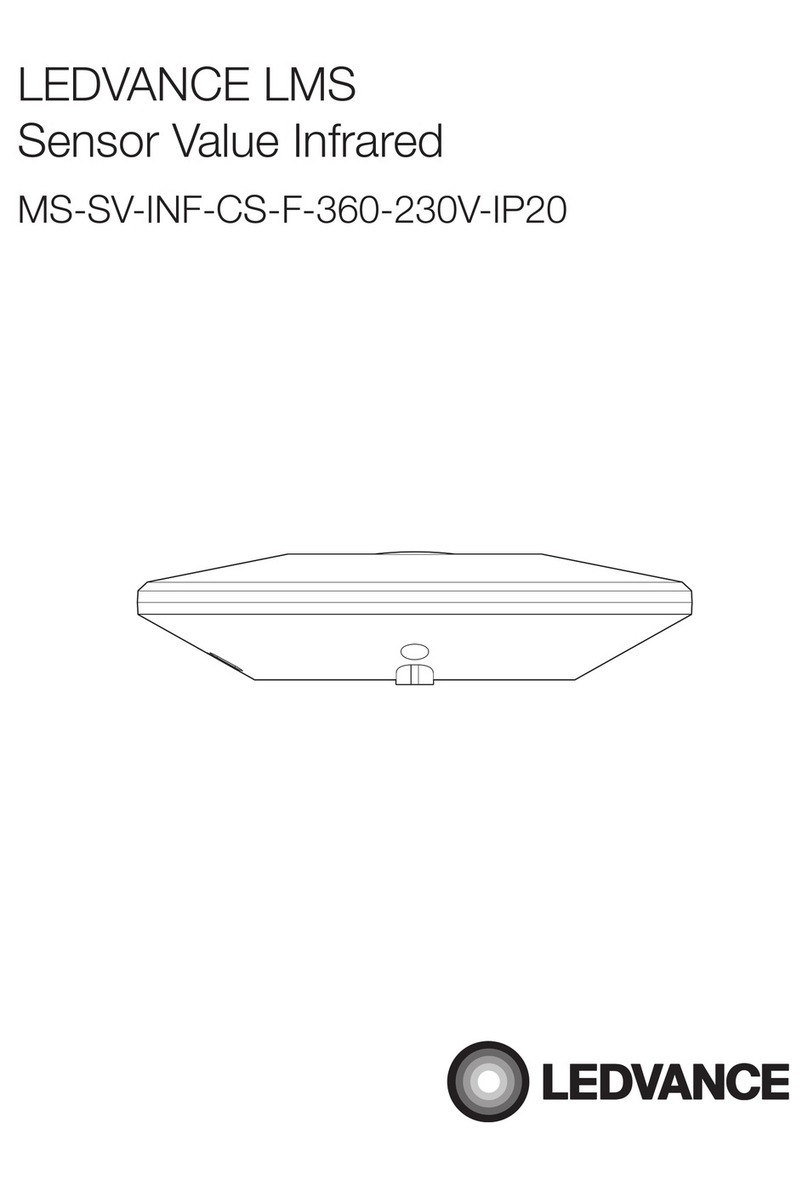
Ledvance
Ledvance LMS MS-SV-INF-CS-F-360-230V-IP20 installation instructions
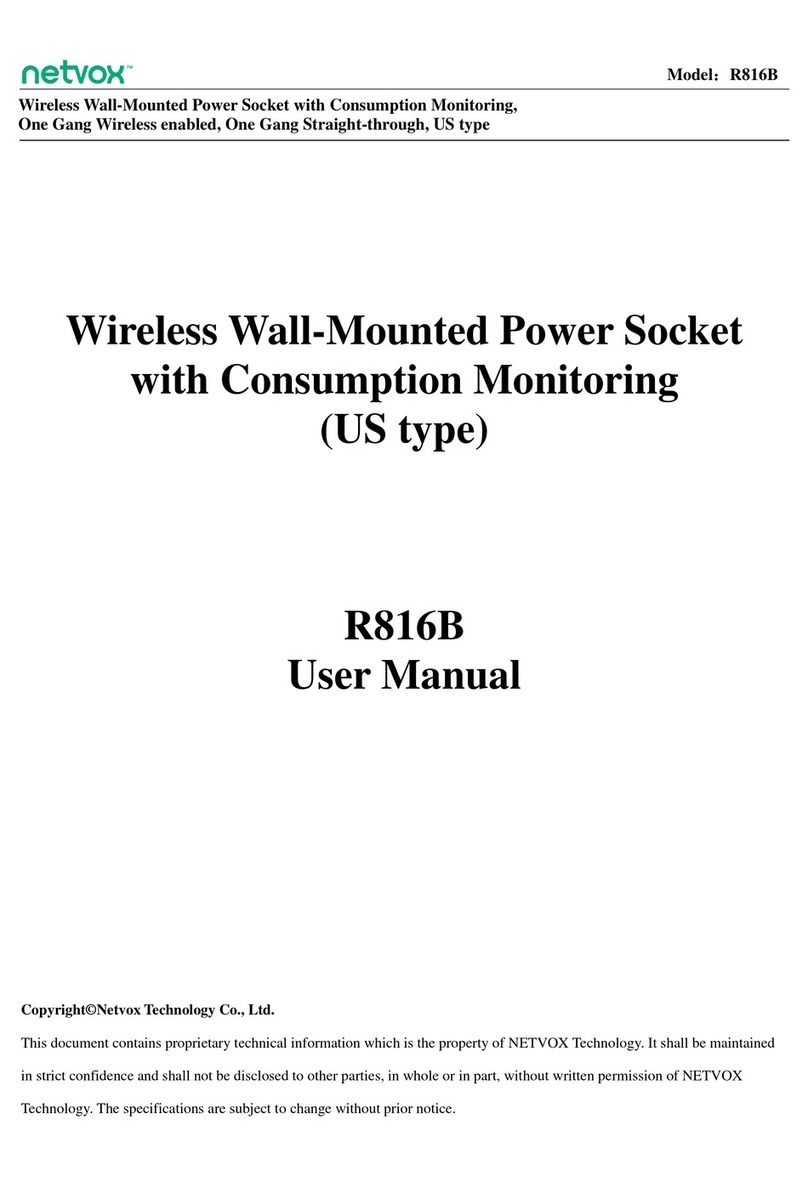
netvox
netvox R816B user manual
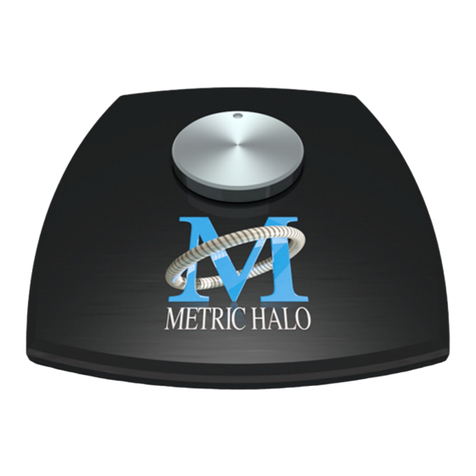
Metric Halo
Metric Halo Mobile I/O user guide
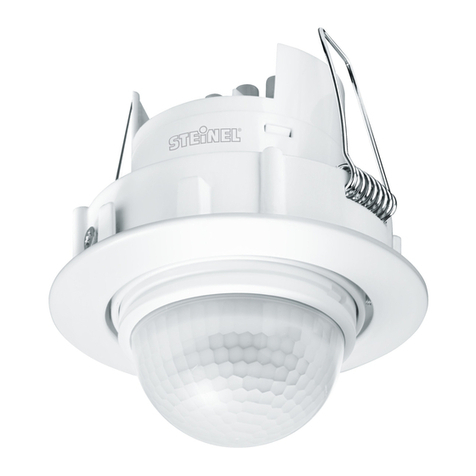
STEINEL
STEINEL IS D360-120 installation instructions
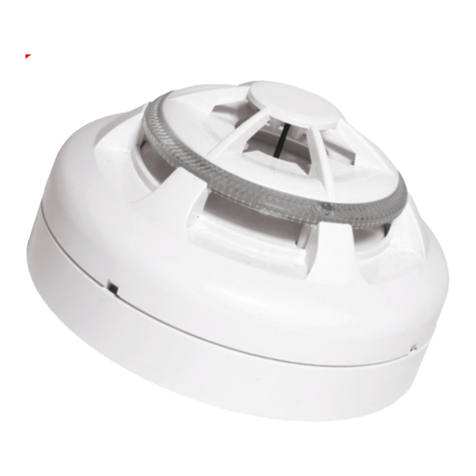
sensortec
sensortec NITTAN ST-H2-AS instruction manual
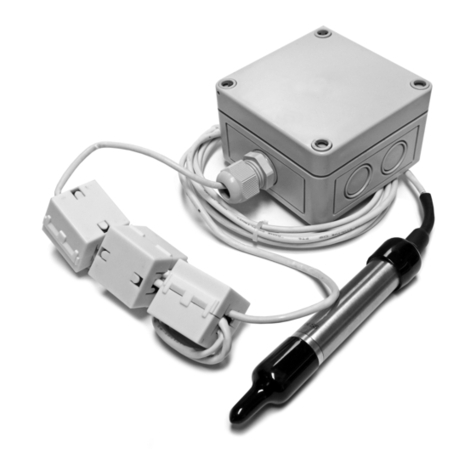
aci
aci A/TT Remote Probe Series Installation & operation instructions
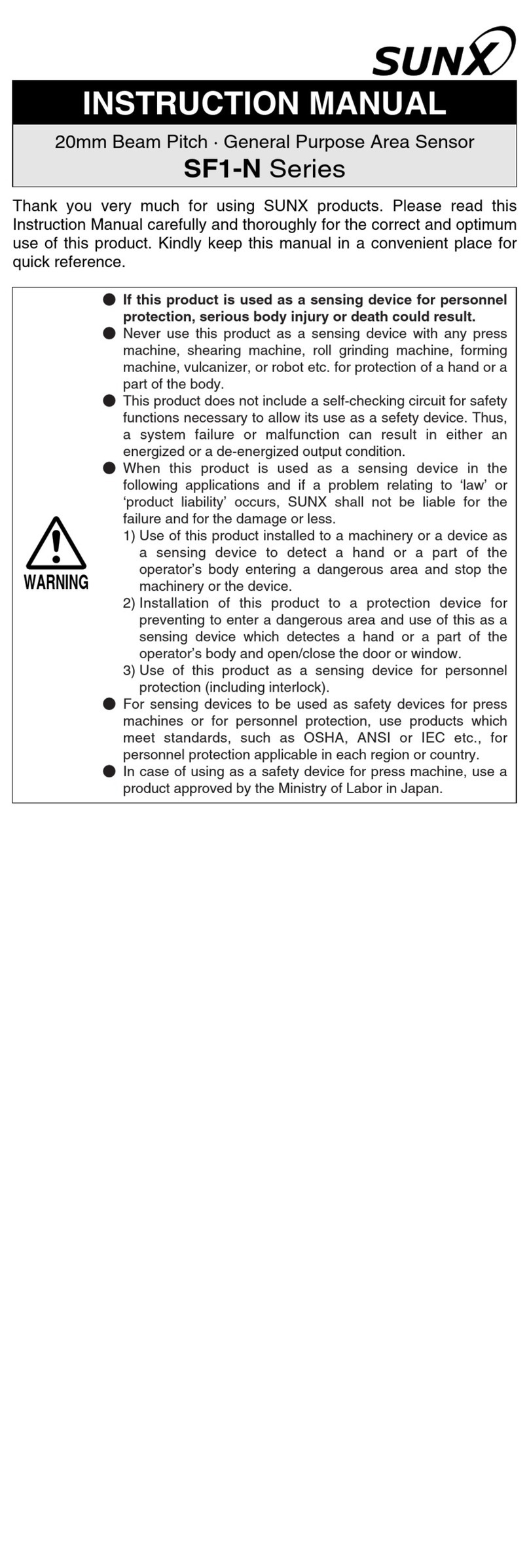
Sunx
Sunx SF1-N Series instruction manual
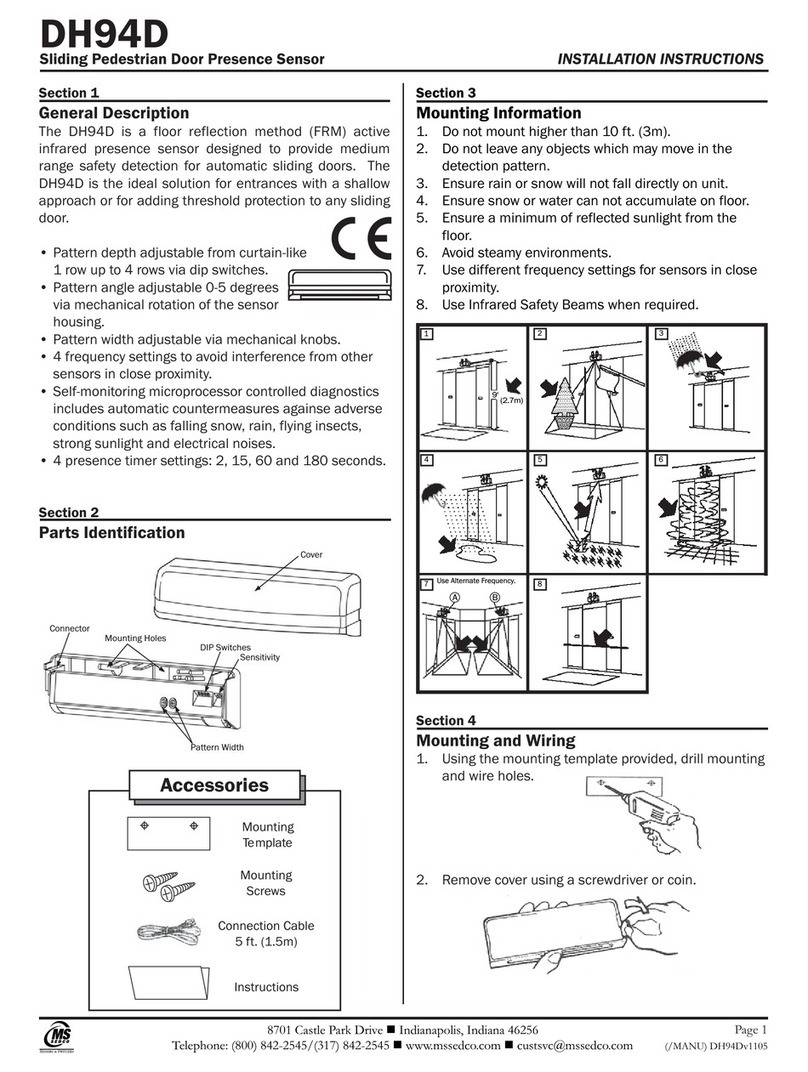
MS Sedco
MS Sedco DH94D installation instructions
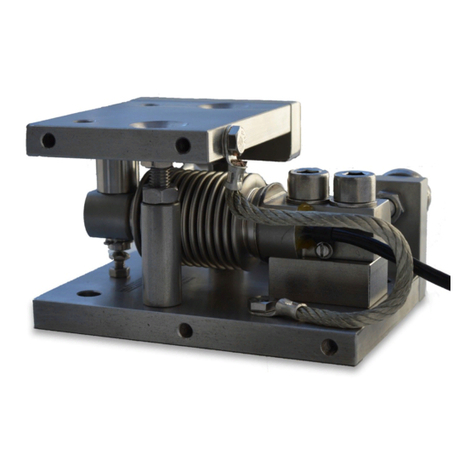
Siemens
Siemens SIWAREX WL230 BB-S SA operating instructions
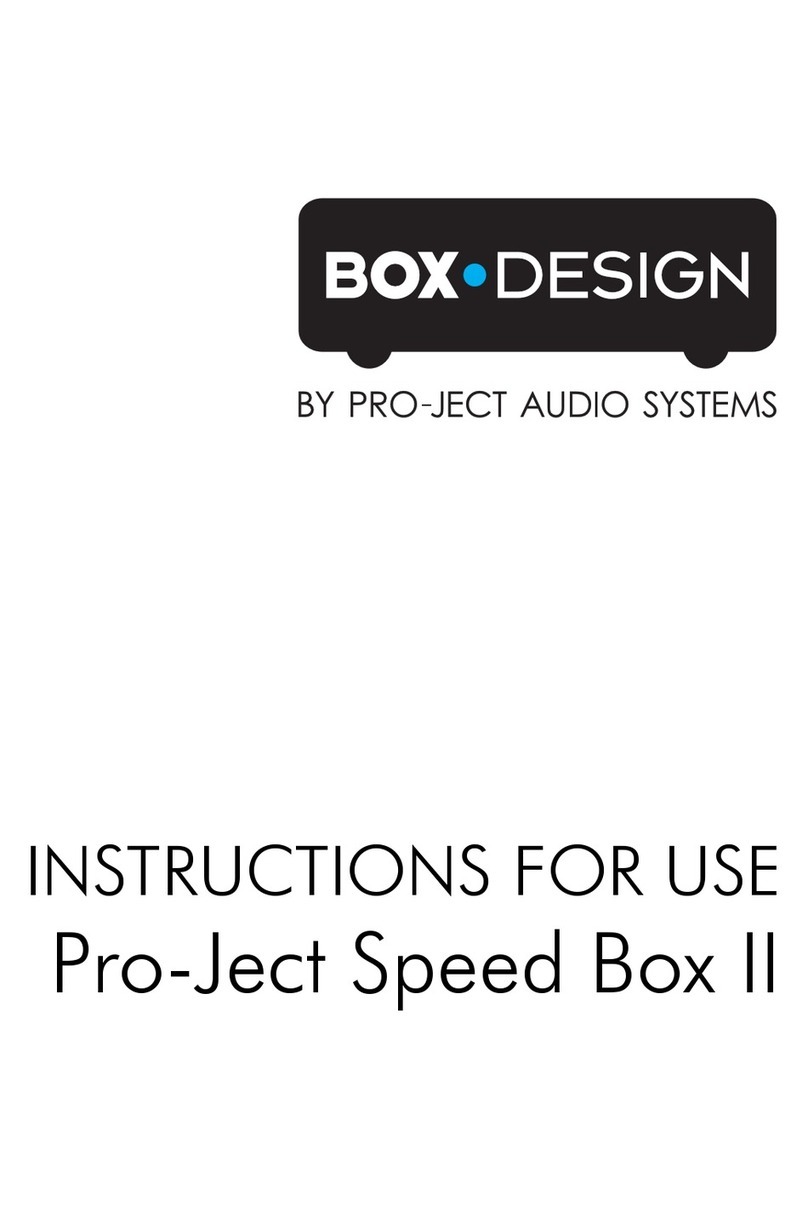
Pro-Ject Audio Systems
Pro-Ject Audio Systems Speed Box II Instructions for use
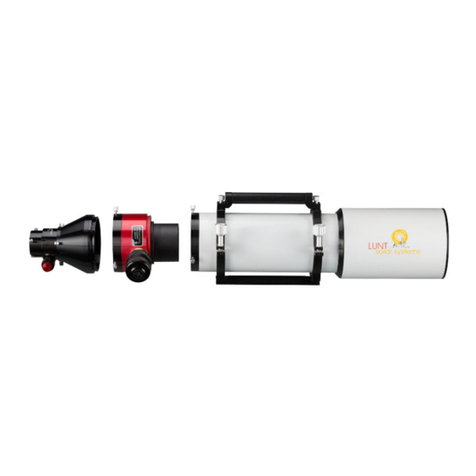
Bresser
Bresser Lunt-Solar-Systems Crayford focuser with... manual
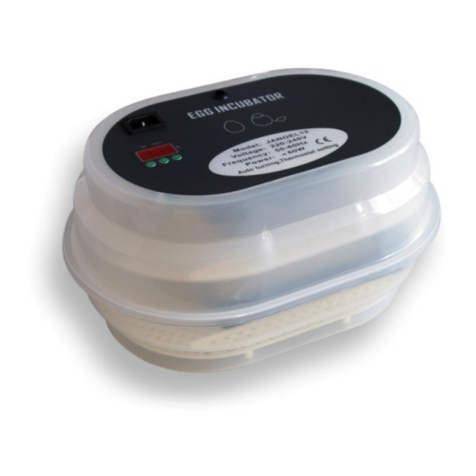
WilTec
WilTec 50035 Operation manual




